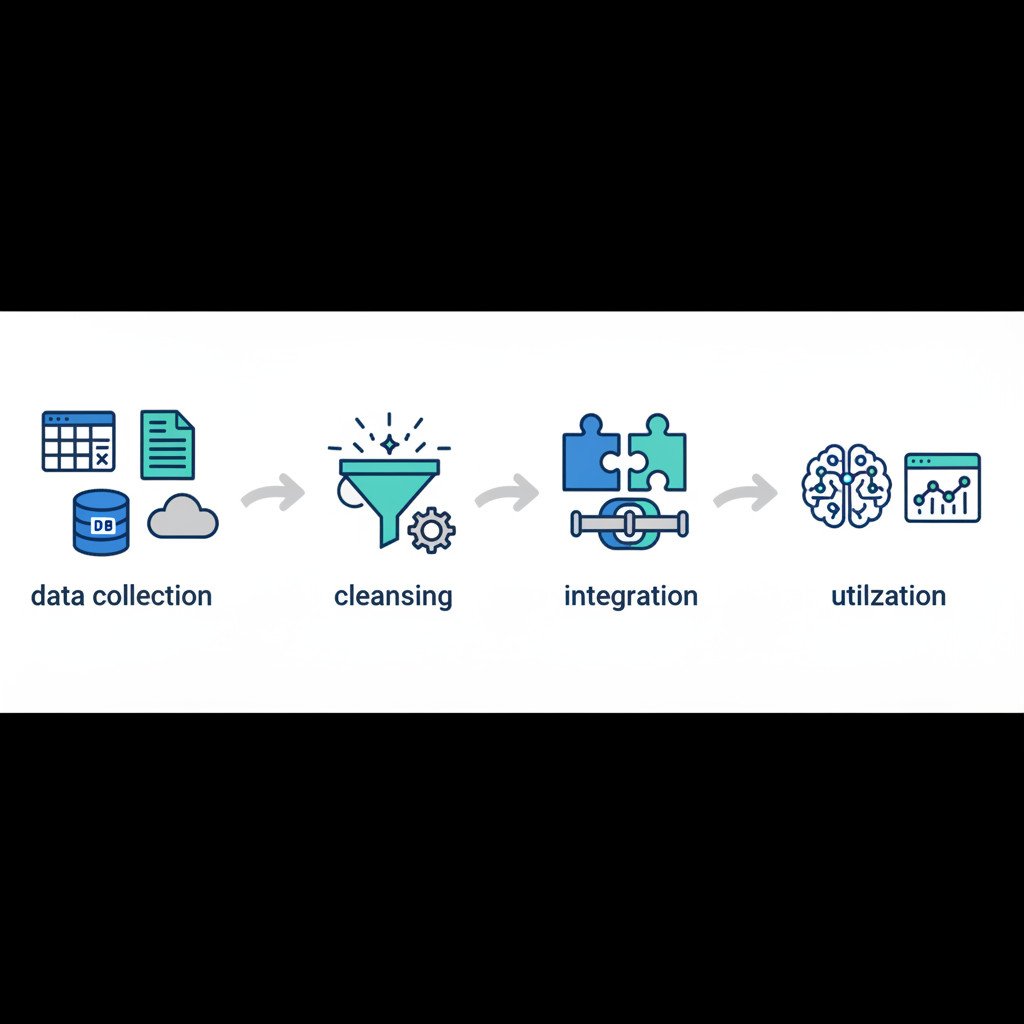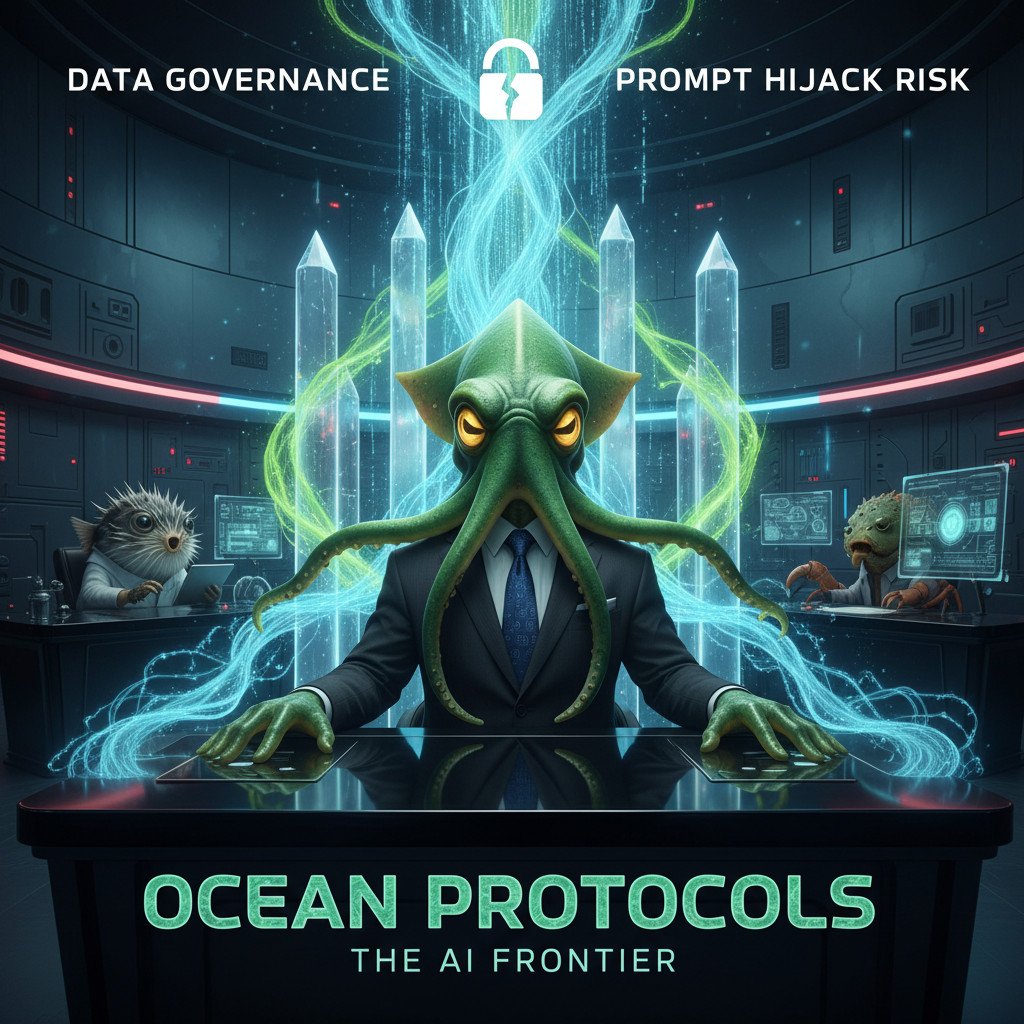Introduction
AI data readiness determines whether AI projects deliver value or fail. Today, businesses must prepare messy, scattered data for safe, reliable models. Because poor data quality recreates Big Data era problems, readiness is now strategic.
This article explains why AI data readiness matters across operations, security, and compliance. First, we map common data sources such as spreadsheets, CRM, ERP, emails, PDFs, and real-time feeds. Then, we examine data preparation, governance, bias mitigation, and near-real-time ingestion best practices. We also cover AI protocol threats like prompt hijacking and the guardrails you need.
You will get practical steps to balance opportunity, risk, and cost when choosing platforms. Moreover, we highlight vendor considerations and frameworks that pace setters follow. Read on to learn clear, security-conscious workflows for making data AI-ready.
Gartner sees AI-ready data climbing the hype cycle toward productivity. Therefore, many organizations must act now to avoid falling behind. This piece combines cautious, technical guidance with security-first recommendations. As a result, you can prioritize fixes and build reliable AI pipelines.
What is AI data readiness
AI data readiness means preparing information so AI can use it reliably. Because data comes from many sources, readiness covers technical and governance work. In practice, it makes data accurate, accessible, and secure for model training and inference. Therefore, AI projects deliver value faster and with fewer surprises.
Key components of AI data readiness
- Data quality: Clean, deduplicated, and validated records reduce model error. For example, remove inconsistent formats and correct obvious mistakes. Moreover, track completeness and freshness as ongoing metrics.
- Data accessibility: Systems must expose data with stable APIs and catalogues. As a result, data scientists and ML tools can find and retrieve datasets quickly. Consider how spreadsheets, CRM, ERP, and data lakes feed pipelines.
- Data governance: Policies and roles control who can use data and for what purpose. In addition, implement lineage, metadata, and audit logs to prove compliance.
- Security and privacy: Protect sensitive fields and apply anonymisation where required. For example, guard against prompt hijacking and protocol risks by using zero trust and strict access controls. See the JFrog analysis of MCP prompt hijacking for technical context.
- Real-time treatment: Treat data as a live asset rather than a static snapshot. Therefore, ingest and validate streams near real time.
Why organisations must focus on AI data readiness
AI models amplify data flaws; poor inputs yield unreliable outputs. However, organisations that invest in readiness unlock faster deployments, better compliance, and lower long term costs. For practical steps on adoption and platform choice, read this guide on AI adoption in IT operations and this piece on agentic AI orchestration for enterprise scaling. Finally, infrastructure matters too; learn how data centre shifts affect readiness here.

AI data readiness Benefits
AI data readiness improves model accuracy and speeds deployments. Because clean data reduces noise, models learn faster. As a result, teams spend less time on debugging and more on innovation. Benefits include improved decision making, cost savings, and stronger regulatory posture.
- Improved AI outcomes: Better quality data yields more reliable predictions. For example, deduplicated CRM records cut false positives in churn models.
- Faster time to value: Automated cleansing and catalogs let teams find usable datasets quickly. Therefore, pilots move to production with fewer delays.
- Better compliance and traceability: Lineage and metadata make audits simpler. In addition, governance reduces legal risk when using sensitive records.
- Operational efficiency: Integrated pipelines reduce manual handoffs and errors. As a result, analysts spend time on insights not data wrangling.
AI data readiness Challenges
Many organisations face structural and technical barriers when preparing data for AI. However, understanding these challenges helps you prioritise fixes and plan investments.
- Data silos and fragmentation: Information sits in spreadsheets, CRM, ERP, email, and data lakes. For example, marketing and sales often maintain different customer views, which confuses models.
- Data quality and bias: Legacy systems contain errors and skewed samples. Because models amplify bias, you must run bias checks and corrective sampling.
- Compliance and privacy: Regulations demand strict controls over personal data. Therefore, anonymisation and consent tracking become mandatory steps in pipelines.
- Real-time ingestion and cost: Treating data as live increases complexity and compute costs. In addition, vendor choice matters because platforms vary on latency, security, and price.
Addressing these benefits and challenges forms the core of a pragmatic AI readiness program. Start small, iterate, and apply security first principles to guard against protocol threats and prompt hijacking.
Tools and Techniques for AI data readiness
Use this table to compare tools and techniques for AI data readiness. Because needs vary, choose based on scale, budget, and compliance. However, start with a quality and observability layer first.
| Tool or Technique Name | Key Features | Advantages | Suitable Use Cases |
|---|---|---|---|
| Great Expectations | Schema checks, data tests, data docs | Catches quality issues early; easy test writing | Batch pipelines and feature stores |
| Soda (Soda Core Cloud) | Anomaly detection, monitoring, rules | Lightweight monitoring; open source option | Data observability and pipeline alerting |
| Monte Carlo | End to end data observability and lineage | Automatic incident detection; reduces manual toil | Production data reliability for analytics |
| dbt | SQL transformations, versioning, testing | Simple lineage; reproducible transforms | Transform layer in ELT workflows |
| Airbyte | Connectors, incremental sync, open source | Fast ingest from many sources; extensible | Ingest spreadsheets, SaaS apps, databases |
| Fivetran | Managed connectors, schema mapping | Low maintenance; fast setup | Teams needing plug and play ingestion |
| Apache Atlas | Metadata management, lineage, tagging | Strong governance; audit support | Large regulated environments |
| Alation | Data catalog, collaboration, search | Improves discoverability; boosts reuse | Self service analytics and governance |
| MLflow | Experiment tracking and model registry | Tracks models and metrics; easy integration | MLOps pipelines and model promotion |
Conclusion
AI data readiness is the foundation of reliable AI and measurable business growth. Because models reflect their inputs, poor data leads to poor outcomes and wasted investment. Therefore, organisations must treat data quality, governance, and security as strategic priorities. As a result, teams deliver faster, more trustworthy AI features that scale.
EMP0 (Employee Number Zero, LLC) positions itself as a leader in practical AI and automation solutions. In particular, EMP0 focuses on sales and marketing automation to drive revenue and operational efficiency. Moreover, their approach combines data readiness practices with secure, production grade automations. Consequently, companies can convert clean data into predictable growth.
If you want to accelerate AI adoption safely, explore EMP0 solutions for AI powered growth systems. Visit emp0.com and the company blog at articles.emp0.com to learn more. You can also follow updates on Twitter/X at @Emp0_com and read founder posts on Medium at medium.com/@jharilela. Finally, see EMP0 creator automations on n8n and contact the team to start a pilot.
Frequently Asked Questions (FAQs)
What exactly is AI data readiness and why does it matter?
AI data readiness means preparing data so AI systems work reliably. Because models reflect their inputs, readiness reduces errors. It covers data quality, governance, accessibility, and security. As a result, teams deploy models faster and with less risk.
How do I begin an AI data readiness program?
Start with a small pilot focused on high value data. First, map data sources such as spreadsheets, CRM, and ERP. Then, run basic quality checks and add lineage metadata. Finally, automate cleaning and cataloguing. In addition, involve legal and security early.
How long and how much will AI data readiness cost?
Time and cost vary by scale and complexity. Small pilots can run in weeks. However, enterprise scale often needs months and cross team work. Costs include tools, compute, and staff time. Therefore, prioritise quick wins and measure ROI continuously.
What common pitfalls should teams avoid?
Avoid these frequent mistakes:
- Overlooking data silos and outdated records
- Ignoring bias checks and fairness tests
- Skipping governance and consent tracking
Because models amplify these flaws, each pitfall risks bad outcomes and compliance breaches.
How do we protect AI pipelines from security threats like prompt hijacking?
Apply zero trust principles to AI protocols. In addition, restrict model contexts and use strong authentication. Monitor model inputs and outputs for anomalies. Finally, keep sensitive fields anonymised during training. These steps reduce attack surfaces and supply chain risks.
If you still have questions, focus on one dataset and iterate. This approach creates practical progress and clearer ROI.

